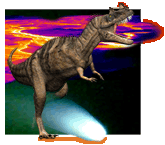My primary research focuses on major catastrophes in Earth’s history including the biological and environmental effects of catastrophes, such as meteorite impacts and major volcanic eruptions that lead to mass extinctions, rapid climate changes and ocean acidification. This research integrates paleontology, stratigraphy, sedimentology, geochronology and geochemistry in reconstructing past environmental changes associated with or leading up to mass extinctions. The main focus has been on two major catastrophes – the Chicxulub impact and Deccan volcanism – and their respective roles in the end-Cretaceous mass extinction. This research is largely the result of interdisciplinary collaborations with an international team of scientists and students.
Research Topics
For the past three decades Deccan volcanism has been suspected of playing a major role in the end-Cretaceous mass extinction but proof remained elusive due to the lack of marine microfossils for dating in this continental flood basalt province. Our study of KTB sequences between Deccan basalt flows in central and eastern India and oil company deep wells (3000-4000m) in the Krishna-Godavari Basin documented the mass extinction in planktic foraminifera in intertrappean sediments between the world’s longest lava flows near the end of the Maastrichtian and ending with the KT boundary. These studies directly link the mass extinction to Deccan volcanism (Keller et al., 2008, 2009, 2011, 2012; Adatte and Keller, 2013; Keller, 2014). An outcrop study in Meghalaya (NE India) documented the mass extinction 700 km from the Deccan volcanic Province (Gertsch et al., 2011).
A major research effort concentrates on identifying the global effects of Deccan volcanism, particularly the rate and tempo of the mass extinction, ocean acidification (dissolution effects), high stress effects, such as reduced diversity, dwarfing of species and blooms of disaster opportunistic species. These biological studies are coupled with climate change (stable isotopes), paleomagnetic and magnetic susceptibility studies, and geochemical identification of volcanic minerals tied to Deccan volcanism. This research is part of the PhD project of Jahnavi Punekar (Punekar et al., 2014a, 2014b; Font et al., 2014).
High-resolution (U-Pb) age dating of Deccan eruptions has remained elusive – until 2014 when the Princeton team discovered zircon crystals for dating of basalts in C29r yielding accuracy within +/-15-25 ky. Our ongoing work in collaboration with Blair Schoene, Kyle Samperton, Sam Bowring (MIT) and Thierry Adatte (U. Lausanne) has succeeded in dating 3200 m of Deccan basalt flows in C29r as having erupted over just 630,000 years.
The Chicxulub impact is commonly believed to have crashed into Yucatan precisely at the KT boundary and caused the mass extinction. However, the stratigraphically oldest impact glass spherule ejecta documented from NE Mexico and Texas predate the mass extinction by 100-150 ky. Elsewhere in the North Atlantic, Caribbean, Belize, Guatemala and southern Mexico, there is a consistent pattern of impact spherules reworked in early Danian sediments and overlying a major KTB unconformity. This indicates that the Chicxulub impact predates the KT boundary and did not cause the mass extinction (Keller et al., 2009, 2013).
Mass wasting and slumps, in the North Atlantic, some with Chicxulub impact spherules, have been interpreted as the result of Chicxulub impact-generated earthquakes. High-resolution faunal, stratigraphic, mineralogical and stable isotope studies reveal that this disturbance occurred in the early Danian well after the KT boundary mass extinction and was likely caused by Caribbean tectonic activity. This study is part of the PhD project of Paula Mateo (Mateo et al., in prep.).

